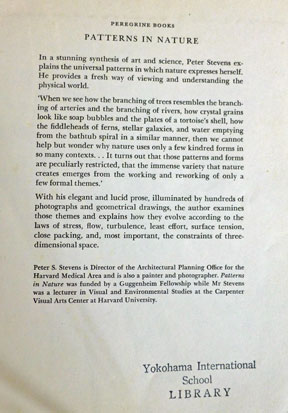I see geometry everywhere. Work by an African artist in our Jerwood Gallery uses circles and lines to make trees. Reminds me of Mondrian. I continue playing with compasses and circles/stars/pentagons. Painting them with local soils ground up with my secondhand pestle and mortar. But I find no opening out.
Monday 11 May
In Rock House.
Soil is made from crumbled rock, the earth is alive, the living skin of the earth, all life depends on fertile soil – what lives in the soil? earthworms, millipedes, beetles, snails, slugs, ant, moles, woodlice. Microbes/bacteria – cells – what do they look like?
Insects: in sections, three sections, three pairs of legs. I draw a cockchafer. An insect a day….
What is the soil made of: silica, alumina, potash, magnesia – algae, funghi. Rich soil, hungry soil.
I look in ‘Soils and Fertilisers’ by A.J. Macself 1943. “Mother earth is very wonderful and responsive; generous without compare to those who lend their time, their interest, their labour; safer than banks to yield liberal interest upon judicious investments; greatest of all producers both of the necessities and joys of life.” Interesting.
PATTERNS IN NATURE by Peter S Stevens 1974: This book I have been looking for ever since I browsed it in Blackwells book shop in Oxford while visiting my brother in 1977. I had no money to buy it then. I found it a couple of years ago, stamped inside: Yokohama International School LIBRARY.
We see the patterns and similarities in tree branches, rivers, tortoise shell, star galaxies. “It turns out that those patterns and forms are peculiarly restricted, that the immense variety that nature creates, emerges from the working and reworking of only a few formal themes.”
This is what I found out: Spirals, meanders, branching patterns, 120 degree joints, occur again and again. Pentagons make most of the flowers. Hexagons handle most of the repetitive 2D patterns but never enclose 3D space. Spiral is versatile. 5 reular polyhedrons can be produced but no more. 7 systems of crystals can be employed but never an eighth. Of all the constraints on nature, the most far reaching are imposed by space. For space itself has a structure that influences the shape of every exisitng thing. (How? what?) We think space is nothingness, an absence BUT nothingness has an architecture that makes demands on things. c.f. the effects of water on fish (buoyancy, pressure, streamlining). Einstein showed there are other kinds of spaces and that patterns and forms in those other spaces differ from the ones we see in ours. How does our kind of space affect the shape of things? Modern physics. This book was written in 1974 so I guess ideas have moved on. But this is all new for me. Space, not a big nothing but a big everything.
First day of ROCK 2.
I bring lots of stuff and start a new sketchbook.
I write a list of ways forward: research into floor mosaics, floor patterns, tiles which were made usually of local earths. The ground beneath our feet, again, the ground of our being.
Take photos of local shop entrances, the library floor mosaic, church floors. Check out the symbolism.
More time and space to think and look, experiment and expand.
CHARLES LAMB: Nothing puzzles me more than time and space; and yet nothing troubles me less, as I never think about them.
Floor designs: bringing down the stars, filling the void, holding on, making certain, pushing away doubt to make way for certainty, solidity.
I looked on my shelves for books to bring with me and found:
‘APPLIED ART’ by Pedro J Lemos, an American book bought by my father who signed it in 14 9 38. He taught art in the 1940s
“Originality and personal inventiveness are important factors in the progress of art study, and should be encouraged.”
DESIGN p. 143 “…decorate their public buildings and churches with many wonderful and exquisite designs worked out from interlacing of circles, square and other mechanical forms.”
I will be starting my new Residency in Rock House Art School on Monday 27 April. I will be the first artist in residence in this new place.
I am looking forward to continuing and developing the ideas from working in the Church including using the soil and rock samples, making geometric shapes with my large pair of compasses and protractor, researching symbols used on church floors, villas, temples, country houses. I wonder if this could be combined with some of the ideas from the Readings on Silence. What is silence? Is it an experience that cannot be described in words? Is it a presence rather than an absence?
There will be an Open Evening at the end of May.
OPEN AFTERNOON IN THE CHURCH
The afternoon went well. 15 people came to each of the Readings on Silence sessions and other people visited between times. As promised I will list the four books from which I read extracts:
The Spirit of Silence by John Lane
A Book of Silence by Sara Maitland
In Pursuit of Silence by George Prochnik
Art Objects (Essays on Ecstasy and Effrontery) by Jeanette Winterson
I have completed this two month Residency with food for thought and ideas for development. In the Saturday Guardian there is a review for Alex Bellos’s book on mathematics: Alex through the Looking Glass. This is a follow up to Alex in Numberland. Never did it cross my mind that I might be interested in numbers and geometry but working in the Church for two months has thrown up unexpected and exciting new directions.










